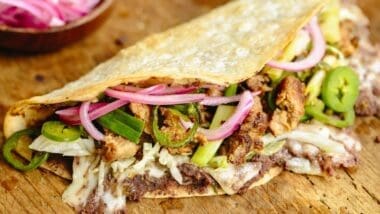The journey into the art of duck preparation reveals layers of complexity that challenge even seasoned chefs. A quest to compare varying levels of duck preparation, from basic to expert, showcases the intricate techniques required to achieve culinary perfection.
The exploration begins with a straightforward pan-seared duck. This basic method involves careful scoring of the duck breast’s fat cap, ensuring not to pierce the meat beneath. The duck is seasoned simply with kosher salt before being placed in a cold pan. As the heat works its magic, the fat renders slowly, creating a rich base to baste with herbs and garlic. The result is a crispy, golden duck breast with a perfectly rosy interior, enhanced with a touch of orange zest and smoked salt.
The focus then shifts to a more advanced technique: dry aging. This process involves removing the duck’s legs and thighs to leave a crown of meat that is aged for up to 14 days. The aim here is to enhance the flavor and ensure an extra crispy skin. After trimming and seasoning, the duck is roasted until it reaches optimal doneness. The outcome is a delectably crispy exterior contrasted with a tender, medium-cooked inside. A glossy orange sauce is drizzled over, adding a sweet finish.
The final stage of this culinary journey tackles the infamous peeking duck. Renowned for its complexity, this dish requires several meticulous steps. The duck is cleaned, seasoned internally with a spiced paste, and painstakingly sewn shut. The skin is inflated using compressed air to separate it from the meat, allowing it to crisp perfectly during cooking. The duck is basted in a flavorful broth before being glazed with a maltose syrup mixture, which imparts a beautiful color and added flavor. After several days in a dry-ager and additional smoking and frying, the duck is finally ready. Despite its lengthy preparation, the resulting dish is rich in flavor, though not without its challenges in achieving the ultimate crispy texture synonymous with traditional peeking duck.
The tasting process reveals that each preparation level has its merits. The basic pan-seared duck excels in rendering the fat, leading to a delightful crust. Conversely, the dry-aged duck offers unparalleled tenderness with its melt-in-the-mouth quality. Meanwhile, the expert-level peeking duck, while exceptionally flavorful, falls short of the crispiness expected, highlighting the intricacies involved in mastering this dish, despite its superior taste.
This detailed exploration into duck preparation underscores the importance of technique in culinary excellence. While simplicity has its appeal, the complex processes involved in advanced preparations can lead to extraordinary flavors and textures, though not without requiring patience and precision. Future attempts at mastering peeking duck may benefit from understanding these challenges, suggesting that the journey to perfecting this dish is as valuable as the end result itself.
Source: Youtube














